
VI. Cultural Beijing: Find Inner Peace
Beijing has diversified culture and different religions. It’s a combination of ancient wisdom and modern creativity. The tranquil and meandering hutongs are not only the veins of the city, but also the residence of ordinary people and a stage for folk customs, recording the vicissitudes over the years. Every corner has countless stories to tell.
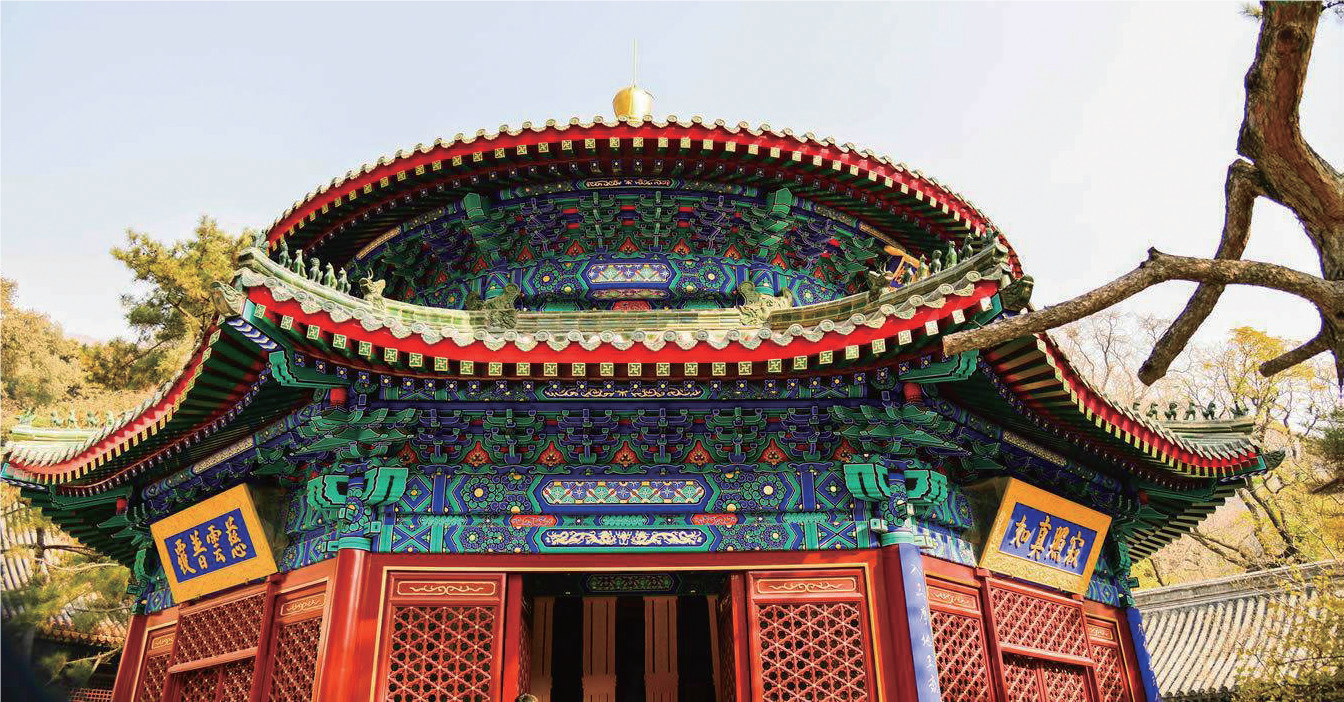
1. Tanzhe Temple
Tanzhe Temple was established in Western Jin Dynasty more than 1600 years ago. It is the oldest temple in Beijing, even older than the city of Beijing. Hence there is a saying that goes, “there comes first the Tanzhe Temple, then the Beijing city”. The Tanzhe Ten Spectacles are well-known to all. The temple was first build in the first year of West Jin Dynasty (307 AD) with the name Jiafu Temple and was later renamed Xiuyun Temple by Emperor Kangxi. Since there was a dragon pool (longtan) behind the temple and mulberry trees (zheshu) in front of the temple, so people like to call it “Tanzhe Temple”.
How to get there
Subway: take Line 1 to Pingguoyuan Station (Exit D –southeastern exit), transfer to Bus 931, and get off at Tanzhesi Gongyuan Stop
Bus: take Bus 931 to Tanzhesi Gongyuan Stop
Address: Tanzhesi County, Mentougou District
Main attractions: Lutan Ancient Path, Pangtan Ancient Path, Xintan Ancient Path, Mentan Ancient Path, Tanwang Ancient Path
Tel: +86-10-60862244
Admission: CNY 55 / person; CNY 30 for elderly people and students (senior citizen ID and student ID card below Bachelor’s Degree must be held)
Ticket for the Zen and martial arts performance: CNY 100 / person
*Free admission for retired cadres, disabled serviceman, children below 1.1m, and senior citizens holding a Beijing Elderly Preferential Card
Opening hours: summer 8:00-17:00, winter 8:00-16:30
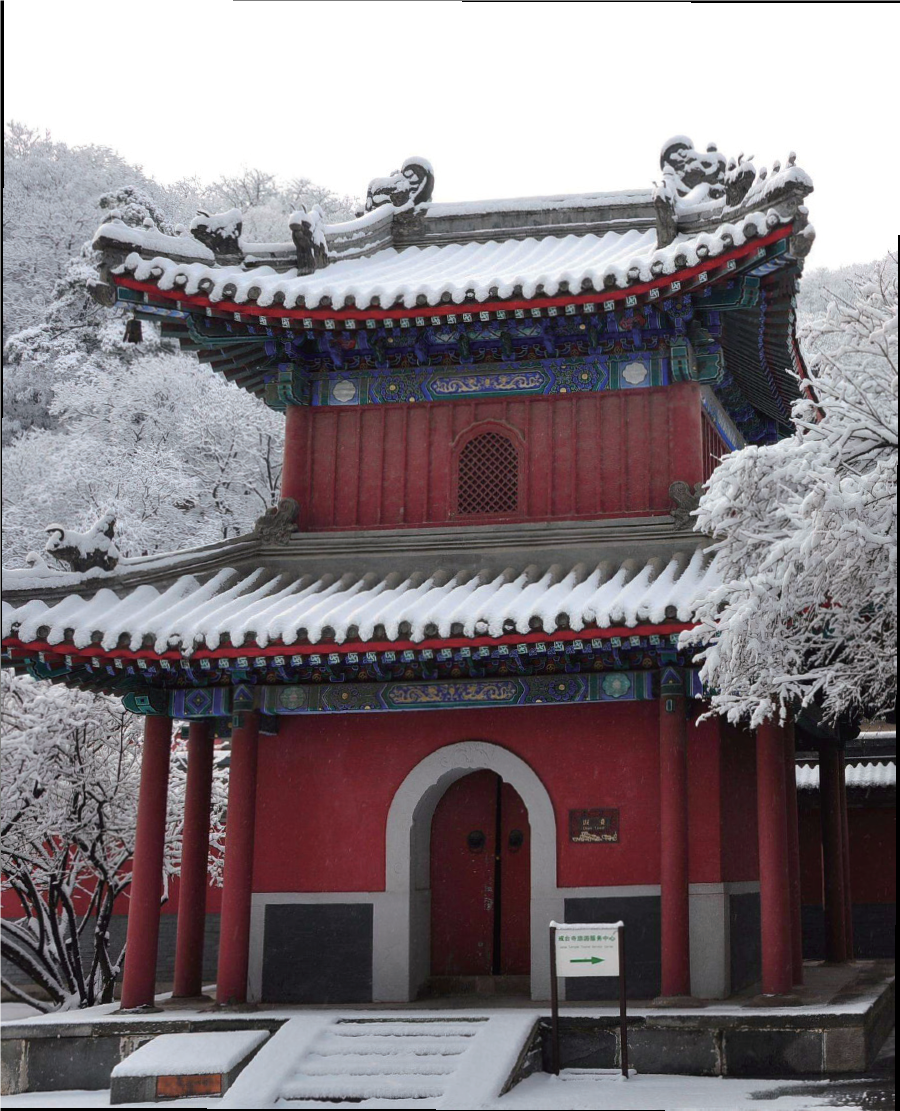
2. Jietai Temple
Jietai Temple was first built in 662 A.D. during the reign of Emperor Gaozu of Tang Dynasty. As a major historical and cultural site protected at the national level, it preserves the largest number of cultural relics in the best condition from Liao Dynasty than any other temples in North China. In particular, it has treasures rarely seen in Liao-Dynasty Buddhism, like pagodas, dharani pillars and the largest Buddhist ordination terrace existent in China.
How to get there:
-By subway: Take Subway Line 1 to Pingguoyuan Station (Exit A). Then transfer to bus 948 and get off at Jietaisi (Jietai Temple) Station
-By bus: take Bus 948 to Jietaisi stop
Address: Jietai Temple, Yongding County, Mentougou District
Main attractions: Ordination Terrace, the Hall of Mount Gate
Tel: +86-10-69802645
Ticket: CNY 45 /person
Opening hours: 8:30-16:30
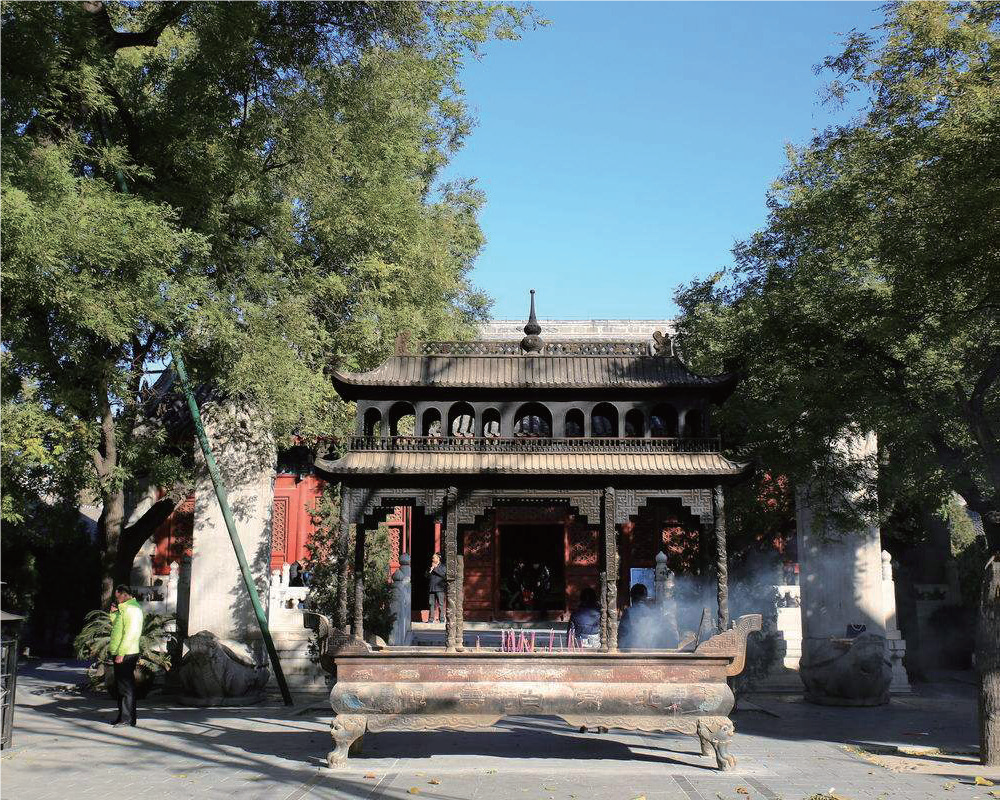
3. White Cloud Temple
Being one of the three “ancestral courts” of the Quanzhen Sect of Taoism, the White Cloud Temple is titled “the First Temple Under Heaven”, and is now the location for the Taoist Association of China and the Chinese Taoist Academy. The stone monkeys and bronze beasts are said to be the incarnation of gods, therefore a lot of visitors come to touch them for good luck. It was originally founded during the Tang Dynasty (618 ~ 907) by Emperor Xuanzong as the shrine of Lao Tzu, the founder of Taoism. It was called Tianchang Guan (Abbey of Celestial Perpetuity) back then. During the reign of Emperor Shizong of Jin Dynasty (1123 ~ 1189), it was expanded and changed its name to the Abbey of Ten Orientations Celestial Perpetuity. At the end of the Jin Dynasty (1115 ~ 1234), it was reconstructed and named the Temple of the Great Ultimate.
How to get there:
-By subway: take Subway Line 1 to Muxidi Station (Exit C1), then walk 1.6km to the destination
-By bus: take Bus 1 / 9 / 26 / 45 / 47
Address: No. 9 Baiyunguan Street, Xicheng District of Beijing
Tel: +86-10-63443666
Ticket: CNY 10 / person
Opening hours: May to September, 08:30 ~ 16:30; October to April, 08:30 - 16:00.
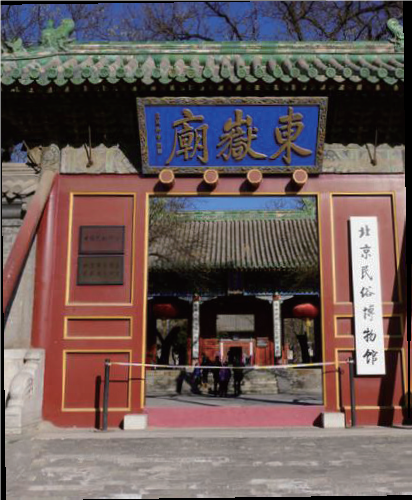
4. Dongyue Temple
Dongyue Temple is the largest Taoist temple of the Zhengyi Sect, one of the two sects of Taoism, in North China. It combines the architectural style of Yuan, Ming and Qing Dynasties. Dongyue Temple is famous for its large number of god statues, stone tablets, and couplets; as well as for its solemn and majestic atmosphere. Dongyue Temple is a perfect example of magnificence and grandeur, and with exquisite decoration and ingenious design, it is an embodiment of the spirit, ethos and charm of traditional Chinese culture.
How to get there:
-By bus: take Bus 75 / 101 / 109 / 110 / 112 / 615 to Shenlujie Stop
-By subway: take Subway Line 6 to Dongdaqiao Station, then walk 660m eastward to the destination
Address: No. 141 Chaoyangmen Outer Street, Chaoyang District
Main attractions: Glazed archway, Yude Hall
Tel: +86-10-6551105
Ticket: CNY 10 / person, half-price for students
Opening hours: 08:30 ~ 16:30

5. Wangfujing Church
Wangfujing Church, also known as Dongtang (the East Cathedral), is originally called St. Joseph’s Church. First built in the 12th year of Emperor Shunzhi’s reign (1655), it is the second catholic church built in Beijing. The first is the South Cathedral (situated at north of Qianmen West Street) built in the end of the Ming Dynasty (1368 ~ 1644). Chinese Patriotic Catholic Association was founded in Wangfujing Church in August, 1957. In 1978, the Church resumed its normal religious activities. The extant building of Wangfujing Church is a three-storey Roman architecture integrated with Chinese architectural elements.
How to get there: take Subway Line 5 to Dengshikou Station (Exit A), then walk 500m westward.
Address: No. 74 Wangfujing Street, Dongcheng District
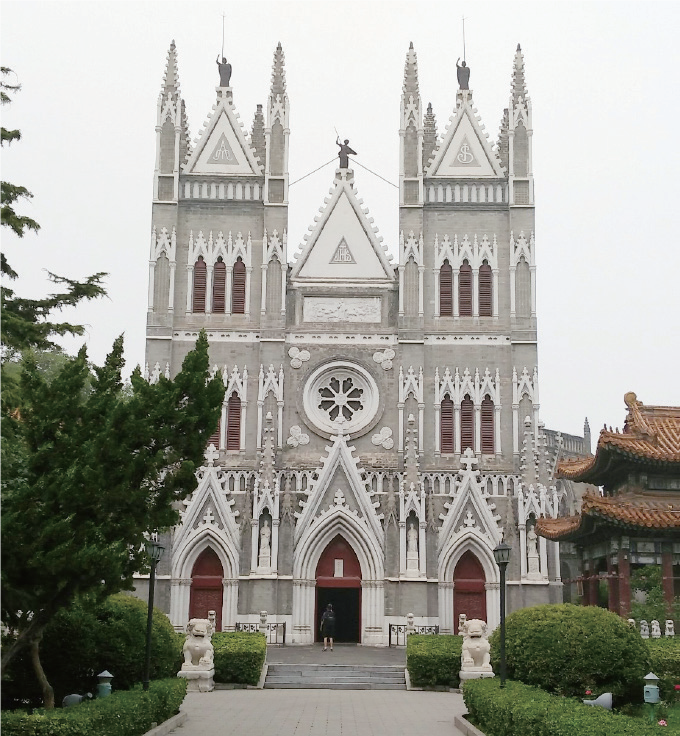
6. Xishiku Church
Xishiku Church, originally called the Church of the Saviour, commonly known as the North Cathedral, is a catholic church situated at No. 33 Xishiku Street, Xicheng District of Beijing. It was opened in 1703. As one of the largest and oldest churches in Beijing, it was used as the main cathedral of Beijing archdiocese for a long time. In 1984, Xishiku Church was listed as a key cultural relics protection unit of Beijing municipality; in June 2006, it was listed among the 6th batch of major historical and cultural sites protected at the national level.
How to get there: take Subway Line 4 to Xisi Station (Exit B), then walk 1.2 km to the destination
Address: No.33 Xishiku Street, Xicheng District

7. 798 Art Zone
The location of 798 Art Zone was originally occupied by the 798 factory. Many art institutions and artists came to rent the idle plants for art creation. Today, it has formed a community of art centers, galleries, artist studios, and design companies, becoming a new urban culture landmark of Beijing.
How to get there: take Subway Line 14 to Wangjingnan Station, then walk 1km to the destination
Address: No.4 Jiuxianqiao Road, Chaoyang District
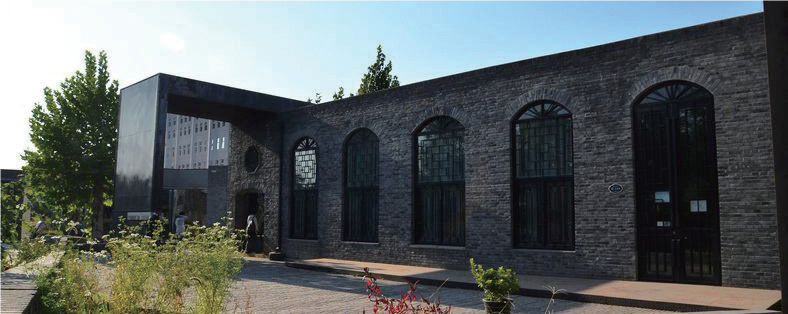
8. Artist Village Gallery
The Artist Village Gallery in Songzhuang is the largest community of creative artists in China. It has gathered over 20 art museums and large art institutions, over 80 galleries, and more than 5000 artists working in over 20 art categories. With a lot of art museums, galleries, artist studios, artist restaurants and recreational activities, it is an attractive international cultural tourism destination.
How to get there: take Bus 813 to Renzhuangcun Station, then walk 500m to the destination
Address: No.1 North Renzhuang Village, Songzhuang County, Tongzhou District
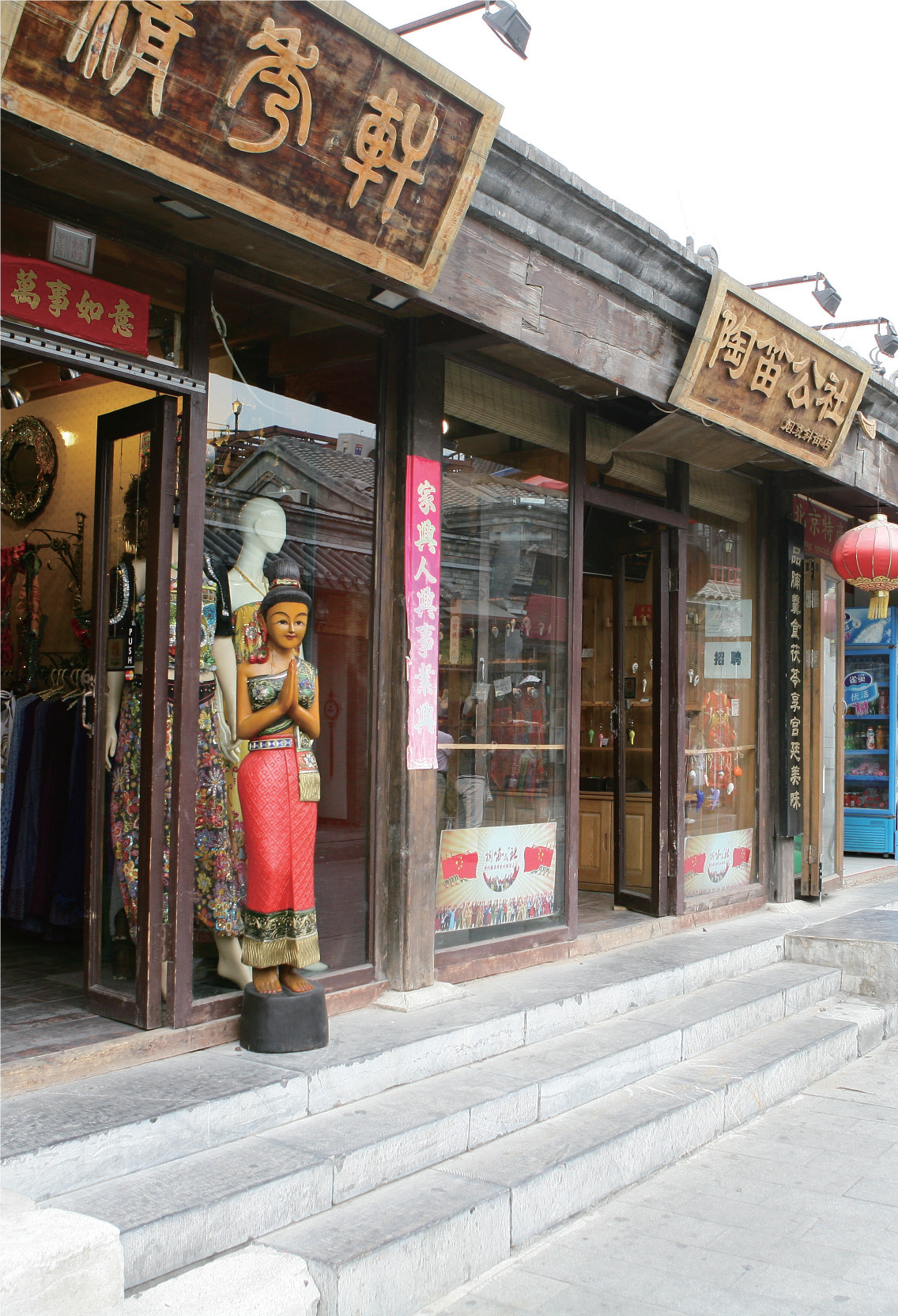
9. The Skewed Tobacco Pipe Street
The Skewed Tobacco Pipe Street is located at the front of the Drum Tower on Di’anmen Outer Street, Xicheng District. From the end of the Qing Dynasty (1644 ~ 1912) to the 1920s and 1930s, it was a business street mainly dealing in tobacco and hookah pipes, antiques, calligraphy, paintings, stationery, snacks, and services. The style of the stores’ architecture is quite simple, but is typical of the northern part of Beijing. It is also a renowned cultural street, where a lot of cultural celebrities have left their footprints.
Address: Shichahai Area, Xicheng District of Beijing
How to get there: take Subway Line 8 to Shichahai Station
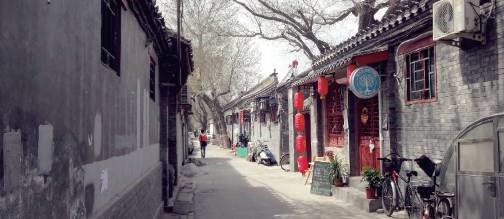
10. The South Gong and Drum Alley (Nanluoguxiang)
The South Gong and Drum Alley is a fine example of Beijing’s hutong and courtyard culture. It is also a business street that combines tradition, fashion and leisure, and was selected by the Time Magazine as one of the 25 best Asian flavored tourist destinations. With strong Beijing flavor and an atmosphere of old Beijing culture, the South Gong and Drum Alley is a must-see for your hutong tour. There are also all kinds of unique stores and bars for you to experience.
How to get there: take Subway Line 6 to Nanluoguxiang Station

11. Wudaoying Hutong
In the Wudaoying hutong, you can always find a lot of expats. Some are tourists, some are shop owners. Because of expats’ passion for the hutong culture, the majority of the earliest investors in Wudaoying hutong are expats. When Wudaoying hutong was developed, some shop owners in Nanluoguxiang and Gulou also came to open branches or new stores here.
Address: Wudaoying hutong, Doncheng District
How to get there: take Bus 301 / 430 to Andingmen stop, then walk 270 m to the destination
relevant article:
Beijing Travel Guide(VII)
Climate of Beijing in September
Appendix: